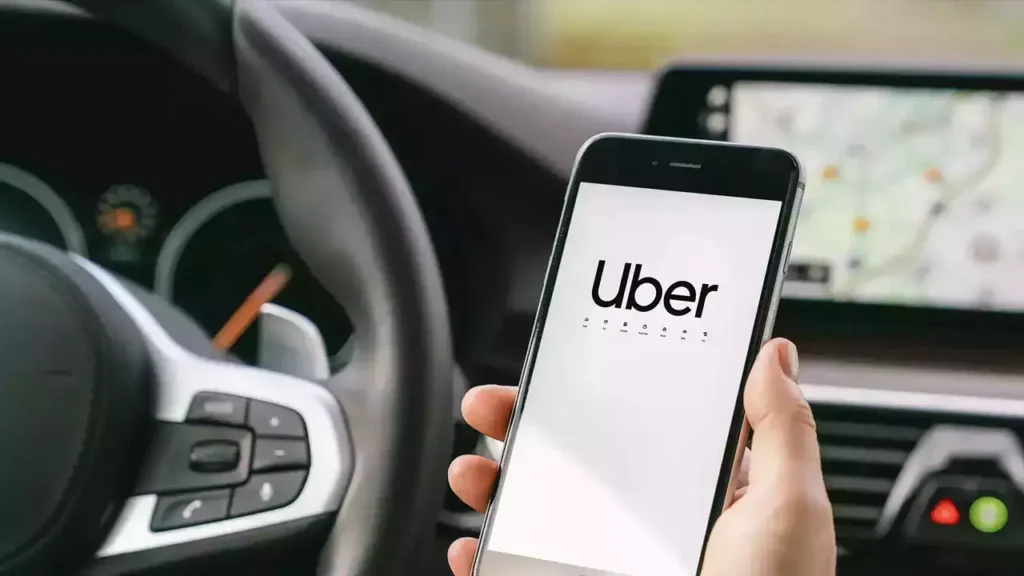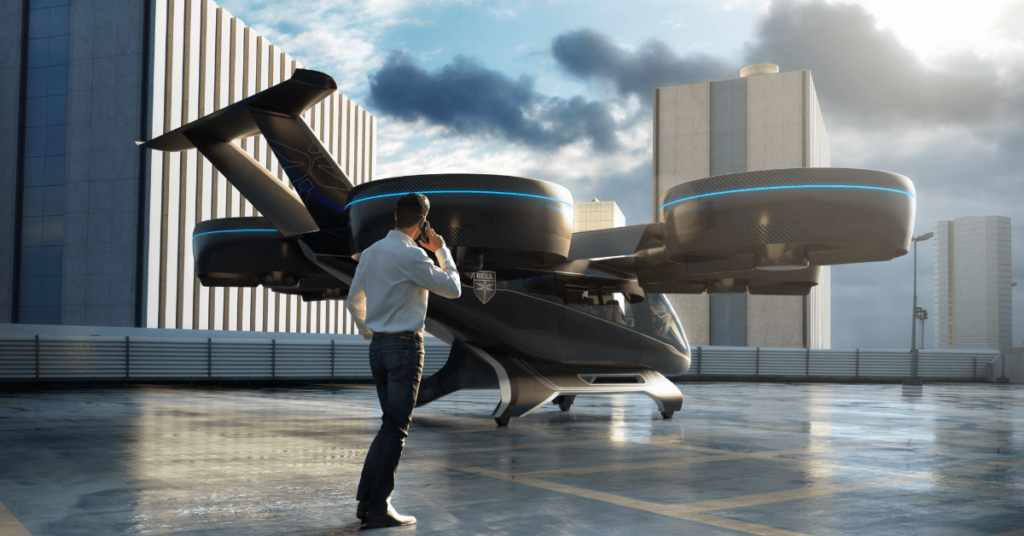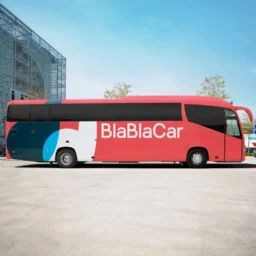
What is Uber?
Uber is a multinational transportation network company that operates through a digital platform, connecting users seeking rides with independent drivers in various locations worldwide. Founded in 2009, Uber revolutionized the traditional taxi industry by providing a convenient, efficient, and often more affordable alternative to traditional transportation services. Through its mobile app, users can request rides, track their drivers in real-time, and make cashless payments, while drivers have the flexibility to work on their own schedules. With a diverse range of service options, including UberX, UberPool, UberEats, and more, Uber has become a ubiquitous presence in the realm of modern transportation, fundamentally changing the way people move around cities.
History Of Uber
The history of Uber traces back to 2009 when Garrett Camp and Travis Kalanick came up with the idea during a snowy evening in Paris. They envisioned a service that would allow users to hail rides through a smartphone app, aiming to address the inefficiencies and unreliability of traditional taxi services. The following year, UberCab (later renamed Uber) was officially launched in San Francisco, offering luxury black car services as an alternative to taxis. The company quickly gained traction, attracting both riders seeking convenient transportation options and drivers looking for flexible income opportunities.
As Uber expanded its services to new cities and markets, it encountered significant regulatory challenges and opposition from traditional taxi industries. Despite facing legal battles and regulatory hurdles, Uber’s innovative business model and aggressive expansion strategies propelled its growth. By leveraging technology and data-driven algorithms, Uber optimized the matching of riders with nearby drivers, providing seamless and efficient transportation experiences. Over the years, Uber diversified its offerings to include a variety of services such as UberX, UberPool, UberEats, and more, catering to different user needs and preferences. Today, Uber has become a household name and a dominant force in the transportation industry, transforming the way people think about getting around cities worldwide.
How Uber Grow their business in short time?
In the early 2010s, amidst the bustling streets of San Francisco, two visionaries, Garrett Camp and Travis Kalanick, found themselves frustrated by the inefficiencies of the city’s taxi services. It was a snowy evening in Paris that the idea first struck them: why not create a service that could be hailed with the tap of a smartphone? Thus, in 2009, UberCab, later simplified to Uber, was born. With Camp’s background in web development and Kalanick’s experience in technology startups, they set out to disrupt the transportation industry.
Their journey began humbly, with a handful of luxury black cars roaming the streets of San Francisco. The concept was simple yet revolutionary – instead of waving down a taxi or calling a dispatcher, users could summon a ride with a few taps on their phone. The convenience was unparalleled, and word quickly spread among tech-savvy San Franciscans. As the demand for Uber’s services grew, so did the company’s ambitions.
Uber’s expansion was swift and relentless. Armed with a bold vision and ample venture capital funding, they set their sights on conquering new markets. From New York City to London, Paris to Tokyo, Uber spread like wildfire, transforming the way people thought about transportation. With each new city conquered, Uber faced resistance from entrenched taxi industries and regulatory hurdles. But they persevered, leveraging their innovative technology and relentless determination to overcome every obstacle in their path.
As Uber’s fleet of drivers multiplied, so did their range of services. From the affordable UberX to the communal UberPool, and even the convenience of UberEats, Uber catered to a diverse array of transportation needs. Dynamic pricing, or surge pricing as it came to be known, ensured that supply always met demand, even during the busiest of times.
Today, Uber stands as a testament to the power of disruptive innovation and relentless ambition. What started as a simple idea to improve transportation in one city has grown into a global phenomenon, reshaping the way we move and inspiring countless imitators along the way. As Uber continues to innovate and expand into new frontiers, one thing is clear – the ride is far from over.
How did Uber become a successful business model?
Uber became a successful business model through a combination of innovative ideas, strategic execution, and relentless adaptation to market dynamics. Here are some key factors that contributed to Uber’s success:
Disruptive Innovation:
Uber identified shortcomings in the traditional taxi industry, such as limited availability, inconsistent service quality, and cumbersome payment processes. By introducing a mobile app that allowed users to easily request rides, track their drivers in real-time, and make cashless payments, Uber offered a more convenient and efficient alternative to traditional taxis.
Technology Integration:
Uber leveraged cutting-edge technology to streamline operations and enhance the user experience. Its sophisticated algorithms matched riders with nearby drivers efficiently, optimizing routes and minimizing wait times. Integration with GPS navigation systems provided drivers with real-time traffic updates, ensuring smooth and efficient rides.
Scalable Business Model:
Uber’s business model was highly scalable, allowing it to rapidly expand its operations to new cities and markets. By recruiting independent drivers and providing them with a platform to connect with riders, Uber was able to quickly establish a presence in major metropolitan areas worldwide.
Flexibility and Convenience:
Uber’s on-demand model offered users unprecedented flexibility and convenience. With the ability to request a ride at any time, track their driver’s location, and pay electronically, Uber provided a level of convenience that was unmatched by traditional transportation services.
Customer-Centric Approach:
Uber prioritized customer satisfaction and continuously sought to improve the user experience. Features such as driver ratings, 24/7 customer support, and in-app feedback mechanisms allowed Uber to gather insights and address customer concerns proactively.
Strategic Partnerships and Alliances:
Uber forged strategic partnerships with various stakeholders, including drivers, vehicle manufacturers, and technology companies. These partnerships helped Uber attract a large pool of drivers, expand its service offerings, and explore new business opportunities.
Dynamic Pricing:
Uber implemented a dynamic pricing model, known as surge pricing, which adjusted fares based on supply and demand. This allowed Uber to balance rider demand with driver availability, ensuring reliable service even during peak hours.
What are the Challenges and Controversies faced by Uber?
Uber has faced several challenges and controversies throughout its existence, ranging from regulatory battles to safety concerns. Some of the key challenges and controversies include:
Regulatory Battles:
Uber has encountered resistance from traditional taxi industries and regulatory authorities in many jurisdictions worldwide. Taxi companies argue that Uber operates unfairly by not adhering to the same regulations and licensing requirements that govern traditional taxis, leading to legal battles and regulatory challenges.
Labor Issues:
The classification of Uber drivers as independent contractors rather than employees has sparked debates over labor rights, wages, and benefits. Many drivers have advocated for better pay, benefits, and employment protections, leading to lawsuits and regulatory scrutiny in various jurisdictions.
Safety Concerns:
Incidents involving assault, harassment, and accidents have raised questions about Uber’s safety protocols and liability policies. Critics argue that Uber’s background check processes for drivers may not be stringent enough, and there have been cases of drivers being accused of criminal behavior or misconduct.
Discrimination and Bias:
Uber has faced allegations of discrimination and bias in its treatment of drivers and riders based on factors such as race, gender, and disability. Reports of discriminatory practices in driver allocation, rider ratings, and customer service have sparked public outcry and calls for accountability.
Ethical Concerns:
Uber has been criticized for its aggressive business tactics, including controversial practices such as surge pricing during emergencies, tracking user data without consent, and engaging in competitive battles with rivals. These actions have raised ethical concerns and damaged Uber’s reputation in the eyes of some consumers and stakeholders.
Cultural Issues:
Uber has faced internal challenges related to its workplace culture, including allegations of sexism, harassment, and toxic behavior among employees. Several high-profile scandals and controversies have prompted leadership changes and efforts to improve diversity, inclusion, and employee morale within the company.
Which different technology does Ubes use in their software?
Uber relies on a sophisticated technology stack to power its online software and mobile applications. Some of the key technologies and components used by Uber include:
Mobile App Development:
Uber’s mobile applications are developed using native languages such as Swift for iOS and Java or Kotlin for Android. These apps provide users with intuitive interfaces for booking rides, tracking driver locations, and making payments.
Backend Infrastructure:
Uber’s backend infrastructure is built on a combination of technologies, including microservices architecture, cloud computing platforms (such as Amazon Web Services or Google Cloud Platform), and containerization technologies like Docker and Kubernetes. This architecture allows Uber to scale its services dynamically to handle millions of requests simultaneously.
Geolocation and Mapping:
Uber relies heavily on geolocation and mapping technologies to match riders with nearby drivers and provide real-time navigation assistance. Uber’s app integrates with mapping services such as Google Maps or Mapbox to provide accurate directions and estimated arrival times.
Data Analytics and Machine Learning:
Uber leverages data analytics and machine learning algorithms to optimize various aspects of its operations, including demand prediction, route optimization, dynamic pricing, and driver allocation. These algorithms analyze vast amounts of data collected from user interactions, driver behavior, and external factors like traffic patterns to improve the efficiency and reliability of Uber’s services.
Payment Processing:
Uber’s payment processing system allows users to make cashless transactions using credit cards, debit cards, digital wallets, or other payment methods. Uber integrates with payment gateways and financial services providers to securely process payments and handle transactions in real-time.
Communication and Notifications:
Uber uses communication technologies such as push notifications, SMS, and email to keep users informed about ride status, driver arrivals, payment confirmations, and other relevant updates. These notifications are crucial for providing a seamless and transparent user experience.
Security and Privacy:
Uber prioritizes the security and privacy of user data and employs encryption technologies, secure authentication mechanisms, and data protection protocols to safeguard sensitive information and prevent unauthorized access or misuse.
How does Uber Create an Impact on Society through its services?
Improved Accessibility:
Uber has expanded transportation options for individuals without access to private vehicles or public transit, particularly in underserved areas where traditional taxi services may be limited or unreliable. By providing convenient and affordable rides on-demand, Uber has made it easier for people to get around cities, access essential services, and participate in economic and social activities.
Economic Opportunities:
Driving for Uber has provided flexible employment opportunities for many individuals, allowing them to supplement their income or work on a full-time basis. Uber’s platform enables drivers to set their own schedules and earn money based on their availability, providing financial independence and flexibility for those seeking alternative sources of income.
Reduced Drunk Driving:
Uber has been credited with helping to reduce instances of drunk driving by providing a safe and convenient alternative to driving under the influence. By offering rides on-demand, particularly during late-night hours when alcohol-related incidents are more common, Uber has contributed to safer roads and decreased rates of alcohol-related accidents and fatalities.
Environmental Impact:
While Uber has contributed to increased traffic congestion in some cities, particularly during peak hours, it also offers potential benefits in terms of reducing car ownership and emissions. By providing a viable alternative to private car ownership and encouraging shared rides through services like UberPool, Uber has the potential to decrease the number of vehicles on the road and mitigate environmental pollution.
Urban Mobility Solutions:
Uber’s services complement existing public transit systems and provide an additional layer of mobility options for urban dwellers. By integrating with public transportation networks and offering first-mile and last-mile solutions, Uber enhances overall urban mobility, making it easier for people to navigate cities and access transit hubs.
which technology Uber can integrate into their business in the future?

Uber is constantly exploring and investing in new technologies to enhance its services and stay ahead of the curve. Some potential technologies that Uber could integrate into their business in the future include:
Autonomous Vehicles:
Uber has been investing heavily in autonomous vehicle (AV) technology, with the goal of eventually deploying self-driving cars as part of its ride-hailing fleet. Integrating AVs could potentially reduce labor costs, increase efficiency, and improve safety, although widespread adoption may still be several years away due to regulatory and technical challenges.
Electric Vehicles (EVs):
As concerns about environmental sustainability grow, Uber could further integrate electric vehicles into its fleet to reduce carbon emissions and environmental impact. Offering incentives for drivers to switch to EVs, partnering with electric vehicle manufacturers, and investing in charging infrastructure could help facilitate this transition.
Aerial Ridesharing:
Uber has been exploring the concept of aerial ridesharing through initiatives such as Uber Air and Uber Elevate, which aim to provide on-demand urban air transportation using electric vertical takeoff and landing (eVTOL) aircraft. Integrating aerial ridesharing could help alleviate traffic congestion in densely populated urban areas and offer faster and more efficient transportation options for users.
Mobility-as-a-Service (MaaS)
Uber could evolve beyond traditional ride-hailing services to become a comprehensive mobility platform, offering a seamless and integrated experience for users to access various modes of transportation, including public transit, micromobility (e.g., bikes, scooters), car rentals, and more. By partnering with other transportation providers and integrating their services into the Uber app, users could benefit from a one-stop solution for all their transportation needs.
Augmented Reality (AR) and Virtual Reality (VR):
Uber could leverage AR and VR technologies to enhance the user experience, improve navigation, and provide interactive content during rides. For example, AR could overlay real-time information about landmarks, points of interest, and navigation instructions onto the user’s smartphone screen, while VR could offer immersive entertainment options for passengers during their rides.
Blockchain and Cryptocurrency:
Uber could explore the potential of blockchain technology and cryptocurrency to streamline payment processing, improve security, and enable peer-to-peer transactions within its platform. Implementing blockchain-based solutions could help reduce transaction fees, enhance transparency, and facilitate faster and more secure transactions for both riders and drivers.
How Much Can Driver Earn from Uber at this time?
The earnings potential for Uber drivers can vary significantly depending on various factors such as location, time of day, vehicle type, driver’s availability, and market demand. As of Our research, Uber typically takes a commission from drivers’ earnings, ranging from around 20% to 30% of the fare, depending on the type of service provided.
On average, full-time Uber drivers in the United States could earn between $15 to $30 per hour before expenses such as vehicle maintenance, fuel, insurance, and taxes. However, actual earnings can fluctuate based on factors such as surge pricing, driver ratings, and incentives offered by Uber.
It’s important to note that these figures are rough estimates and can vary based on individual circumstances. Additionally, regulations, incentives, and market conditions may change over time, impacting drivers’ earning potential. For the most accurate and up-to-date information on earnings potential for Uber drivers, it’s advisable to consult local sources or reach out to Uber directly for specific details related to a driver’s location and market.
Is Beneficial to start like Uber business nowadays?
Starting a business similar to Uber can still be advantageous in today’s market, particularly in areas where there is high demand for convenient transportation services and limited competition. However, it’s crucial to thoroughly research the local market dynamics, regulatory requirements, and competitive landscape before diving in.
By differentiating your service, focusing on customer satisfaction, and leveraging innovative technology, you can carve out a niche and establish a successful ride-hailing business. With careful planning, strategic execution, and a commitment to meeting the needs of both riders and drivers, starting a business like Uber can be a rewarding venture in the modern transportation industry.
How Can you Start Your Business like Uber with Our help?
Celestial Infosoft’s Uber Clone Script software service, begin by conducting market research to discern demand and competitors. Customize the software in few days to align with your branding and requirements, ensuring features like user and driver apps, real-time tracking, and payment processing are included. Acquire necessary licenses and permits, recruit drivers, and launch your service with a robust marketing strategy. Continuously monitor performance, gather feedback, and iterate on your service to optimize user experience and sustain growth.
Conclusion:
Uber has undoubtedly transformed the transportation landscape, offering convenience, flexibility, and affordability to millions of users worldwide. However, its rapid growth has also brought forth a myriad of challenges and controversies. By understanding the inner workings of Uber, we can better appreciate its impact on society and anticipate the opportunities and challenges that lie ahead in the ever-evolving world of transportation.




Can you be more specific about the content of your article? After reading it, I still have some doubts. Hope you can help me.
Thank you for engaging with our blog post! We appreciate your feedback and would be happy to provide additional clarification on any specific points you’re unsure about. Please feel free to let us know which parts of the article you’d like more information on, and we’ll do our best to address your doubts. Your input helps us improve the quality of our content and ensure it meets your needs.
Thank you for your sharing. I am worried that I lack creative ideas. It is your article that makes me full of hope. Thank you. But, I have a question, can you help me?
hi
yes we can help you
+91 8780181674
Can you be more specific about the content of your article? After reading it, I still have some doubts. Hope you can help me.
tell me what’s your doubts?
Your point of view caught my eye and was very interesting. Thanks. I have a question for you.
Can you be more specific about the content of your article? After reading it, I still have some doubts. Hope you can help me.
Thanks for sharing. I read many of your blog posts, cool, your blog is very good.
Thank you for your sharing. I am worried that I lack creative ideas. It is your article that makes me full of hope. Thank you. But, I have a question, can you help me?
Thanks for sharing. I read many of your blog posts, cool, your blog is very good.
Thank you for your sharing. I am worried that I lack creative ideas. It is your article that makes me full of hope. Thank you. But, I have a question, can you help me?
Your article helped me a lot, is there any more related content? Thanks!